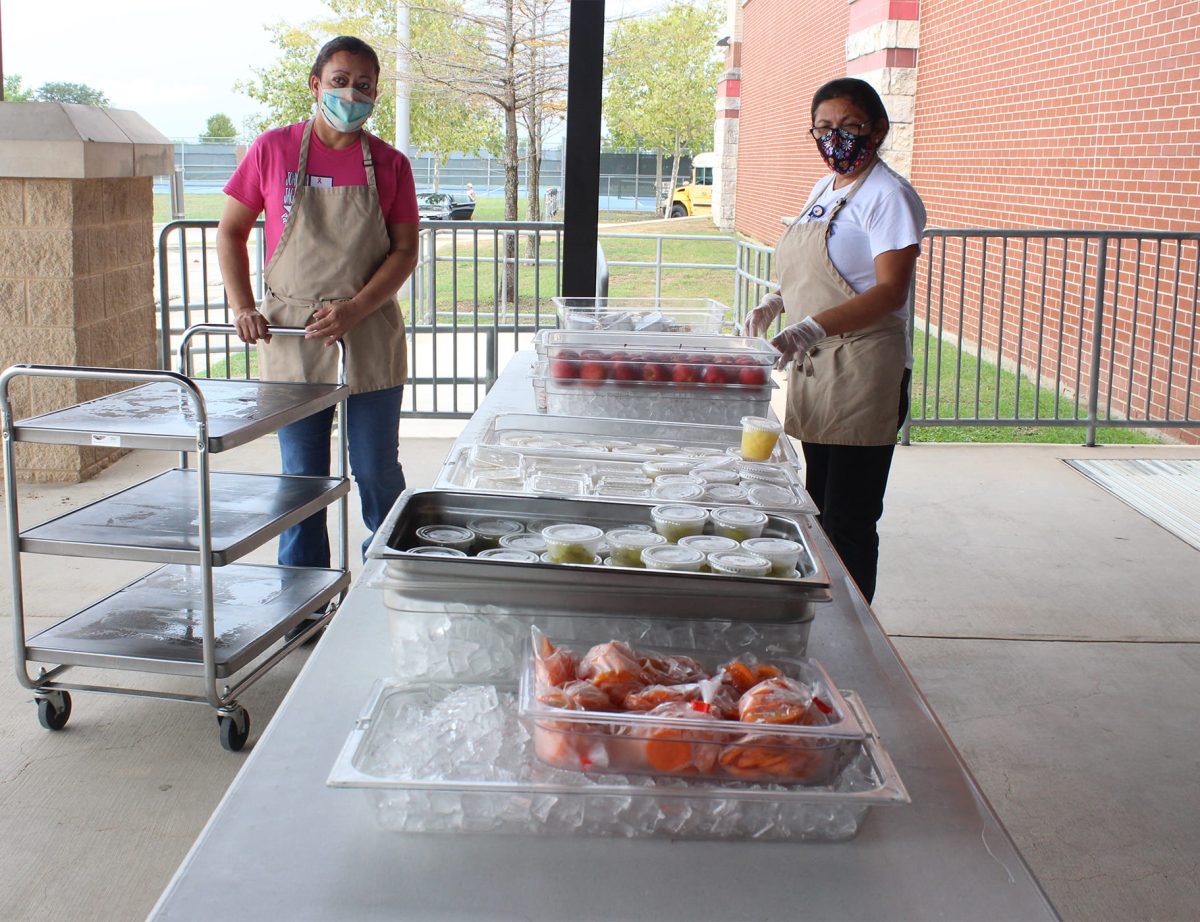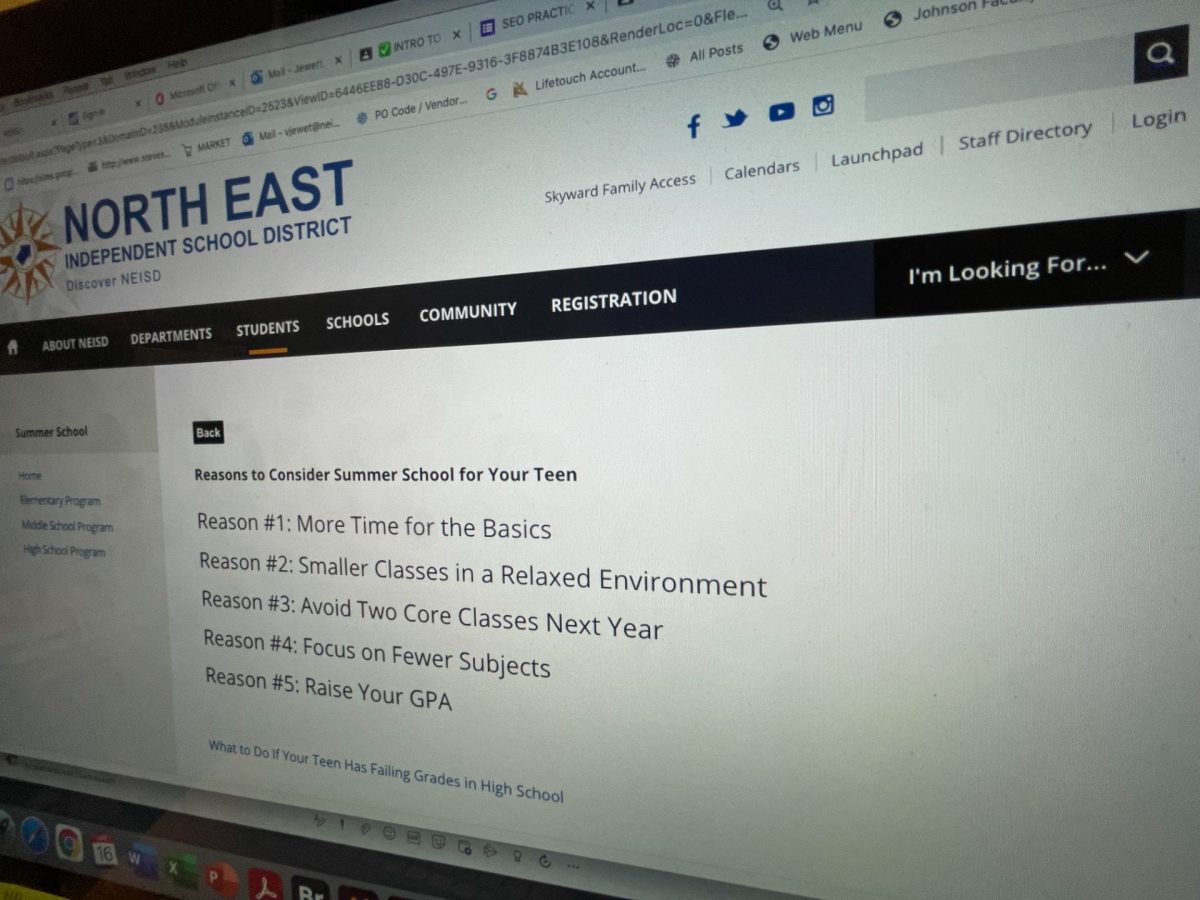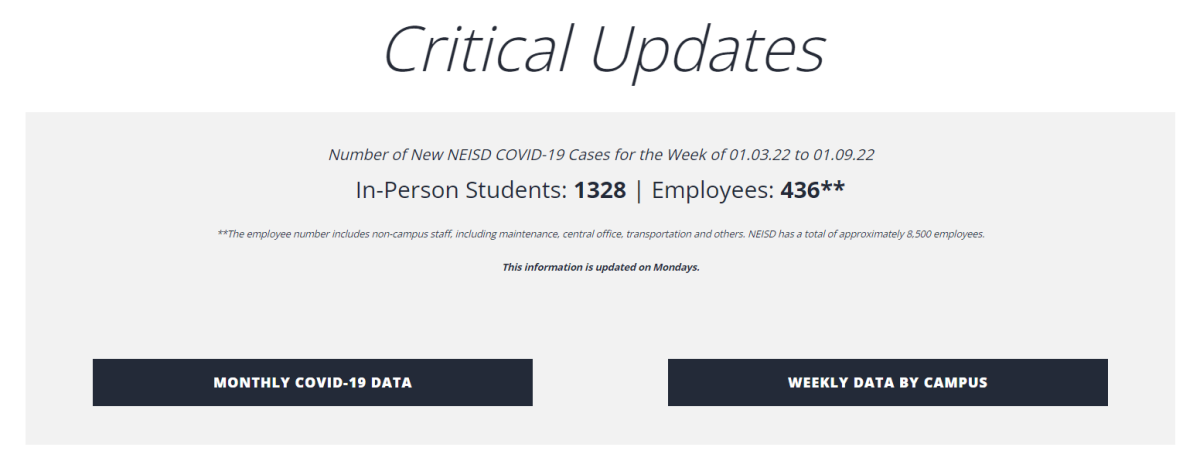
by Kenneth Rosa | staff writer
While schools have made choices to limit some services or student access, the USDA is continuing to implement the decision to make meals free for students for the remainder of the year.
“The USDA made that choice and they sent out information to the districts and they pushed it out. So if you were to go into the cafeteria right now for lunch or breakfast that’s free. So that’s different this year, usually it’s a program and students have to apply for it based on an income level that the family has,” assistant principal Sara Moseley said.
This decision has been made in light of the pandemic in an effort to provide students with free meals available at school and for curbside pick up. Meal pick-up was also part of the services provided by NEISD throughout the summer at selection campus locations.
“It’s a very stressful time, and we want to make sure that kids are…they can’t learn without food and this is also provided for remote learners with no questions asked with meals at that time,” Moseley said.
The decision has given students within the district and even those who aren’t in the district the opportunity for free lunch.
“So it’s free breakfast and lunch for all children 18 and younger, and so that means not only students who are attending school, but as you may know we have a curbside meal program for the virtual students,” Executive Director of School Nutrition Sharon Glosson said. “But also any child 18 and under can visit one of those curbside locations and receive a meal package as well, even if they don’t go to Northeast ISD.”
In light of this decision there have been changes in the cafeteria, in the way they operate and the way they provide lunches.
“You may have noticed that when you go through the cafeteria line you’re not entering in your ID number as you would in the past. So the operation has changed in that the cashiers are keeping a tally on how many meals they serve instead of actually counting for those meals to individual students’ accounts,” Glosson said.
There has been alterations in the variety of lunches students can choose from and in what they are able to select on their plate.
“You may have also noticed that the menu has a lot less variety right now, and so that’s a change in the operation in that the type of food we are serving is more streamlined and simpler to prepare and serve,” Glosson said. “Lastly the biggest change is the way that we serve, the fact that students are communicating their choices instead of physically taking the choices that they want as they did last year.”
The district is seeing many students taking advantage of this decision.
“We are seeing a high number of students participating than we saw in the past when we had either pay reduced price or pay full price and it also means we are able to serve students or children who don’t go to Northeast ISD, that’s due for us during this school year as well,” Glosson said.
This decision is an extension of one made during the summer in order to provide students with free meals, and this has impacted many students throughout the stages of the pandemic.
“From the Spring through the end of the summer we gave out a little over 2.4 million meals from the time the schools closed to the end of the summer, of course that was all curbside and remote because no one was physically at school…we are generally serving about 20,000 students a day under the program,” Glosson said.
On campus, administrators have been seeing some issues sprouting from this decision.
“The bigger problem I see in the cafeteria is because it’s free, there is no requirement that students enter their ID number, so kids who are taking advantage will go back into the line and get a second lunch, because they are not required to enter an ID number,” Moseley said. “So the request is that kids get the free lunch and if they want something else they pay for it, but that’s the only disadvantage I see to it because it’s a great program – but some kids might be taking advantage of it.”
However, not everything on the cafeteria menu is free. There are still things students need to pay for.
“Yes they do, if it doesn’t fall into what the USDA is required to the meal, a milk is provided and a fruit or vegetable, so whatever goes on the tray normally that is what is provided. But if students want extras like Gatorade or those extra snacks or cookies there is an extra line for that, but you have to pay extra,” Moseley said.
The decision may be free for students on and off campus – but it had to come at a price.
“Ultimately, the USDA is covering these meals and they’ve received the funding allocations from Congress through some of the COVID legislations that has gone through since March of 2020, and the thing to remember is that overall we are still feeding many less students than we were before COVID because there are less students at school,” Glosson said.
Many people had a role to play in the making of the decision, but ultimately we have to thank United States Secretary of Agriculture Sonny Perdue.
“So the Secretary of the USDA, his name is Sonny Perdue, and he is the head person of the USDA that works with President Trump and so ultimately it was through his recommendation to extend the program and then Congress and President Trump allocating the funds to be able to provide for the free meals to all children,” Glosson said.
In the past, students who qualified have had the opportunity to receive free lunch and are encouraged even more so.
“I think it has helped make those students who have in the past didn’t want to apply for the program or they were qualified and they felt uncomfortable coming and getting a free meal because of possible stigma or their friends weren’t eating at the cafeteria,” Glosson said. “It provides them with the opportunity for breakfast for lunch and takes the cost out of the barrier”
The district encourages students to participate and take part in the opportunity of free lunch.
“We want to encourage more students to participate who they either don’t realize that its at no cost or maybe if they are just hesitant to participate because of staying line because with the service model being different it may take a little bit longer to go through the line because you have to tell the server everything you want on your plate,” Glosson said.
Administrators are seeing the benefits and amazing opportunity the decision poses for student on campus and across the nation.
“I think it’s great, I truly believe in Maslow’s Hierarchy of Needs, I believe that if the kids aren’t well fed, if they haven’t gotten any sleep and if their basic needs aren’t being met they are not ready to learn…,” Moseley said.








